If You See These Flowers in Your Yard, Don’t Go Near Them, Officials Warn
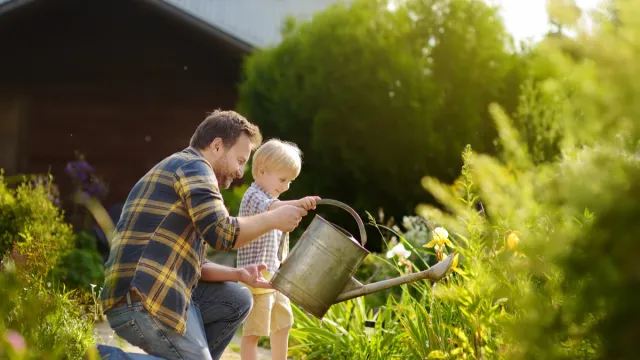
When you were young, you probably learned the three-leaf shapes of poison ivy and poison sumac well enough to remember to stay away from those plants any time you come across them. But while you know to be more careful around the leafy greens that crop up in your yard, you probably don’t exercise the same caution when it comes to flowers. And making a mistake with one flower in particular, which is cropping up more than ever, could prove fatal. Whether you’re gardening or just stopping to smell the roses, you’ll want think twice before getting too close to poison hemlock, which is one of the deadliest plants in North America, experts say. Officials across the U.S. are now warning people about this toxic flower that is spreading at an exponential rate across the country. Read on to find out what it looks like so that you can stay far away from it.
RELATED: Leaving This in Your Garage Is Bringing Snakes to Your Home, Experts Warn.
If you see these white flowers in your yard, don’t go near them.
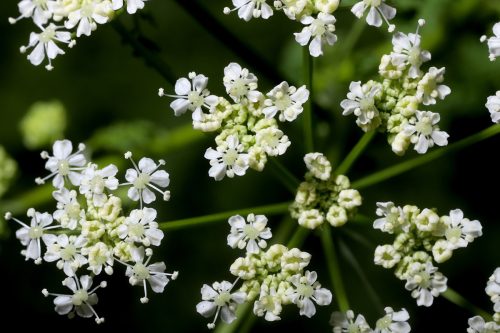
If you see white flowers in your yard, you may be dealing with the highly toxic poison hemlock. According to the National Park Services (NPS), poison hemlock stands out because of its small white flowers, which grow in umbrella-shaped clusters of five. The plant also has stems with purple splotches and leaves that come to a point, like a fern.
And, as Ohio State University professors Joe Boggs and Erik Draper point out, “poison hemlock is one of the deadliest plants in North America.” As the U.S. Department of Agriculture (USDA) explains, sap from the plant can react with the sun and cause blisters or welts on your skin, so just touching poison hemlock can cause you harm.
Dawn Slack, a botanist with The Nature Conservancy’s Indiana chapter, told USA Today that you should wear gloves, long sleeves, pants, and eye protection to even go near poison hemlock.
Officials warn that poison hemlock is quickly spreading in the U.S.
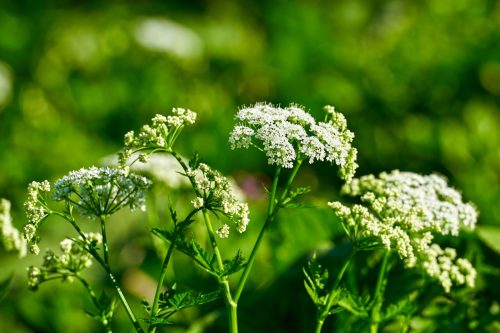
Poison hemlock is spreading rapidly in the U.S. right now. According to the NPS, it’s now in almost every state in the country.
Officials in Indiana, Pennsylvania, Ohio, and Delaware have already issued warnings about the poisonous plant. Dan Shaver, a forester with Indiana’s Natural Resources Conservation Service, told USA Today that in just the last year, this plant has migrated to more populated areas, like parks and even in people’s own backyards. “It just hit this exponential rate of spread,” Shaver said. “Poison hemlock was nowhere and all of a sudden it was everywhere.”
He added, “That movement is a bit scary to me because this plant is very toxic and it’s more of an opportunity for kids to play with it and pets to eat it. It is not a plant you want around your home or in your local park.”
RELATED: For more up-to-date information, sign up for our daily newsletter.
If you eat poison hemlock, there could be fatal consequences.
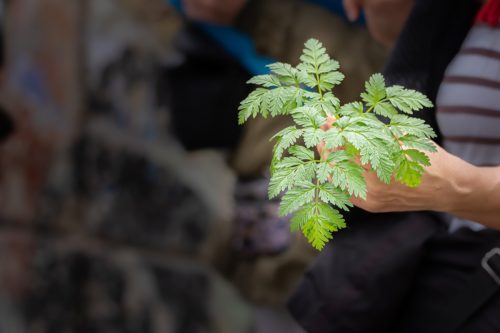
According to the USDA, “all parts of poison hemlock are poisonous,” including the flowers, leaves, stem, fruits, and root. And while there is danger from just touching the plant, the real threat comes from ingesting it. “Often, poisoning occurs after the victim confuses hemlock root with wild parsnips, hemlock leaves with parsley, or hemlock seed with anise,” the agency notes.
Hemlock poisoning can be fatal to humans, as there is no antidote. The toxic alkaloids in the plant can disrupt nerve transmissions to your muscles and result in respiratory failure, USA Today explains.
You should seek immediate medical care if you notice any symptoms of hemlock poisoning.
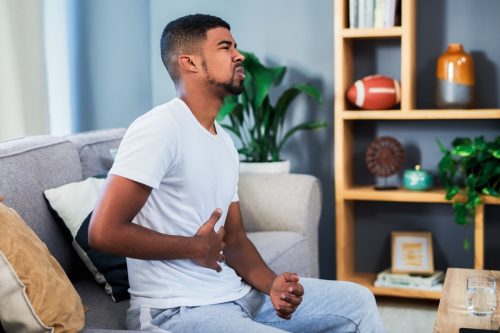
Signs of hemlock poisoning can crop up anywhere from 30 minutes to hours after you eat this plant, according to Healthline. Common symptoms include trembling, burning in the digestive tract, increased salivation, dilated pupils, muscle pain, muscle weakness or muscle paralysis, rapid heart rate followed by a decreased heart rate, loss of speech, convulsions, unconsciousness, or coma.
If your case is severe, it could lead to central nervous system depression, respiratory failure, acute rnhabdomylosis, acute rental failure, or even death. How severe your case is will depend on how much of the plant is in your system and how toxic the particular poison hemlock is that you ingested. While there is no remedy, doctors can try and treat your symptoms, which is why you should seek care as soon as possible. “If you begin experiencing irregular symptoms after eating a plant or herb, seek immediate medical attention,” Healthline advises.
RELATED: If You Never Clean This, You’re Inviting Black Widows Into Your Home.